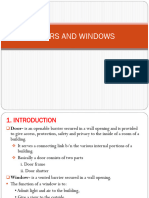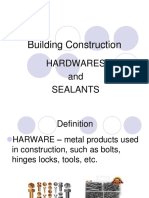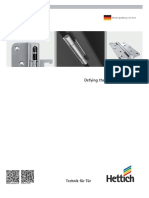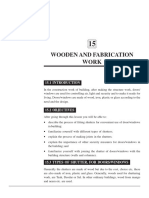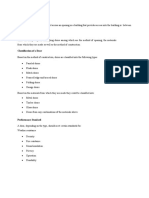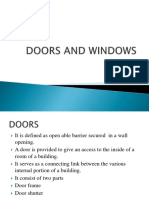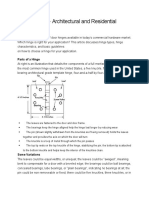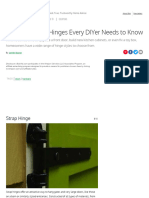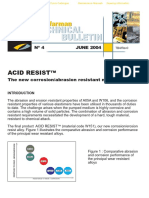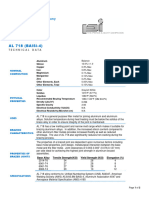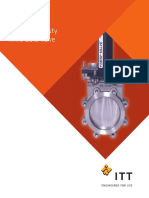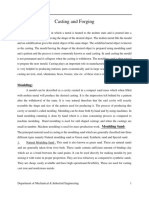0% found this document useful (0 votes)
29 views23 pagesTopic Threee
This document outlines the competencies required to fix building doors and windows, including preparation of openings and installation of ironmongery according to standard operating procedures (SOPs). It provides detailed definitions and descriptions of various types of hinges and bolts used in door and window installations, as well as information on jambs and lintels for structural support. The document emphasizes the importance of proper installation techniques to ensure functionality and aesthetics.
Uploaded by
Stephen KaranCopyright
© © All Rights Reserved
We take content rights seriously. If you suspect this is your content, claim it here.
Available Formats
Download as DOC, PDF, TXT or read online on Scribd
0% found this document useful (0 votes)
29 views23 pagesTopic Threee
This document outlines the competencies required to fix building doors and windows, including preparation of openings and installation of ironmongery according to standard operating procedures (SOPs). It provides detailed definitions and descriptions of various types of hinges and bolts used in door and window installations, as well as information on jambs and lintels for structural support. The document emphasizes the importance of proper installation techniques to ensure functionality and aesthetics.
Uploaded by
Stephen KaranCopyright
© © All Rights Reserved
We take content rights seriously. If you suspect this is your content, claim it here.
Available Formats
Download as DOC, PDF, TXT or read online on Scribd
/ 23












